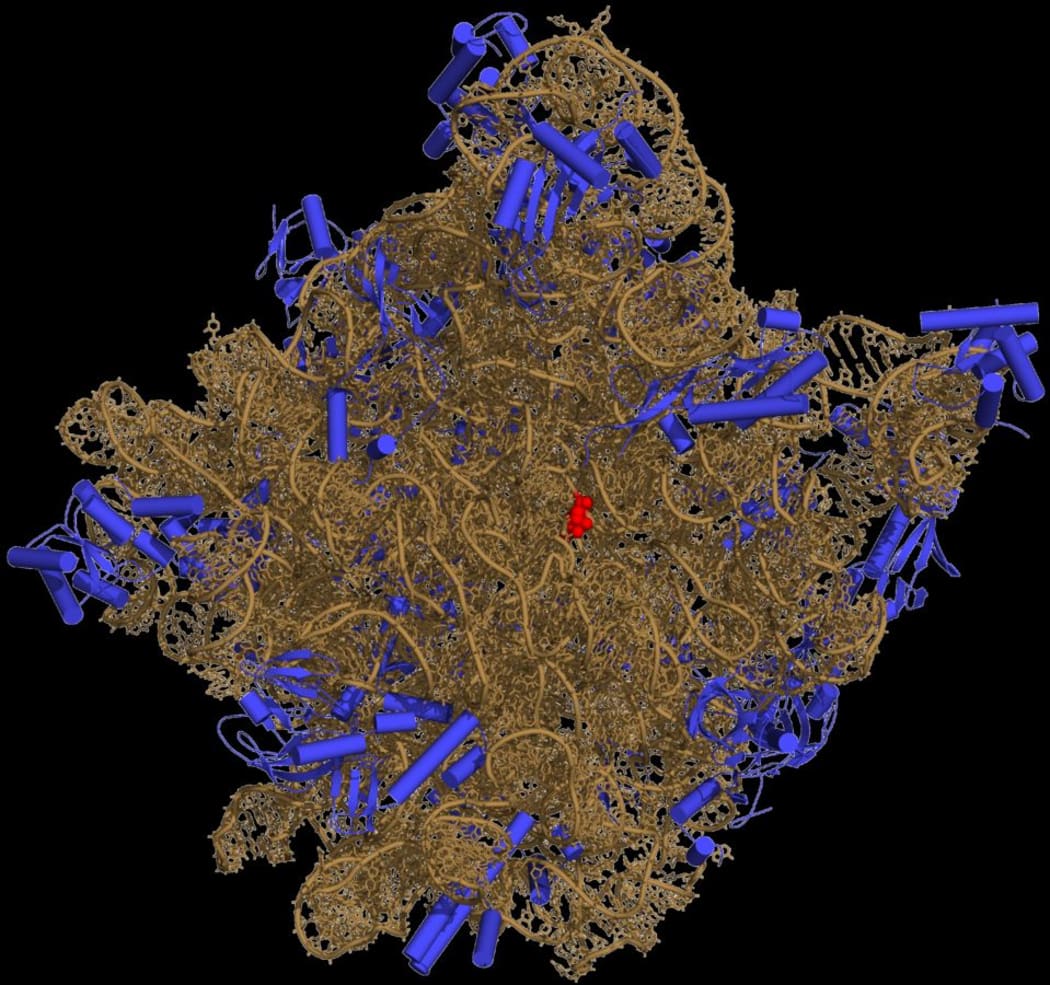
3D representation of the 50S ribosomal subunit. Ribosomal RNA is in ochre, proteins in blue. Photo: (Yikrazuul CC BY-SA 3.0)
Scientists have found a new way to manipulate cells which could be used to fight diseases in the future.
CRISPR is a way to cut and paste DNA, it’s how bacteria have been fighting viruses for billions of years. Now research shows it’s also possible to edit cellular instructions called RNA, specific molecular recipes that a cell uses to build proteins, and life itself.
“CRISPR describes a series of DNA sequences discovered in microbes, part of a system to defend against attacking viruses. Microbes make thousands of forms of CRISPR, most of which are just starting to be investigated by scientists. If they can be harnessed, some may bring changes to medicine that we can barely imagine.” Carl Zimmer in the New York Times
Called C2c2 and only recently observed by scientists, it’s another example of how much there is to learn from observing bacteria and understanding the strategies they’ve evolved in order to survive. If we can reproduce these systems successfully and safely in human cells, this technology could revolutionise medicine.
Why RNA?
The flu bug is an example of an RNA virus, so are HIV, ebola and measles. If we can manipulate RNA then we could control the spread of these diseases, and use this system to fight cancers.

